CrystallineRR & RAMAN Advantages
The CrystallineRR instrument with through the vial analytical capabilities gives the user access to real time Raman spectroscopy in combination with an accurate temperature controlled parallel crystallizer with transmissivity measurement. The independent Raman probes are integrated in an ergonomically designed, pre-aligned, robust and sealed module. The user does not have to insert any probes into the reaction vessel eliminating cross contamination.
Molecular materials and each phase/polymorph of those materials produce unique Raman spectra. The typical Raman spectrum consists of sharp well-resolved peaks, whose intensity is dependent on concentration. CrystallineRR with Raman integration can provide compositional information about the content of the reaction vessel. Raman spectroscopy is a type of vibrational spectroscopy, producing similar information as FTIR (Fourier transform infrared spectroscopy). Raman however is well suited to monitor the solid phase in slurries, including those containing water. While FTIR is essentially blinded by water’s strong IR absorption, water produces only a weak Raman signal.
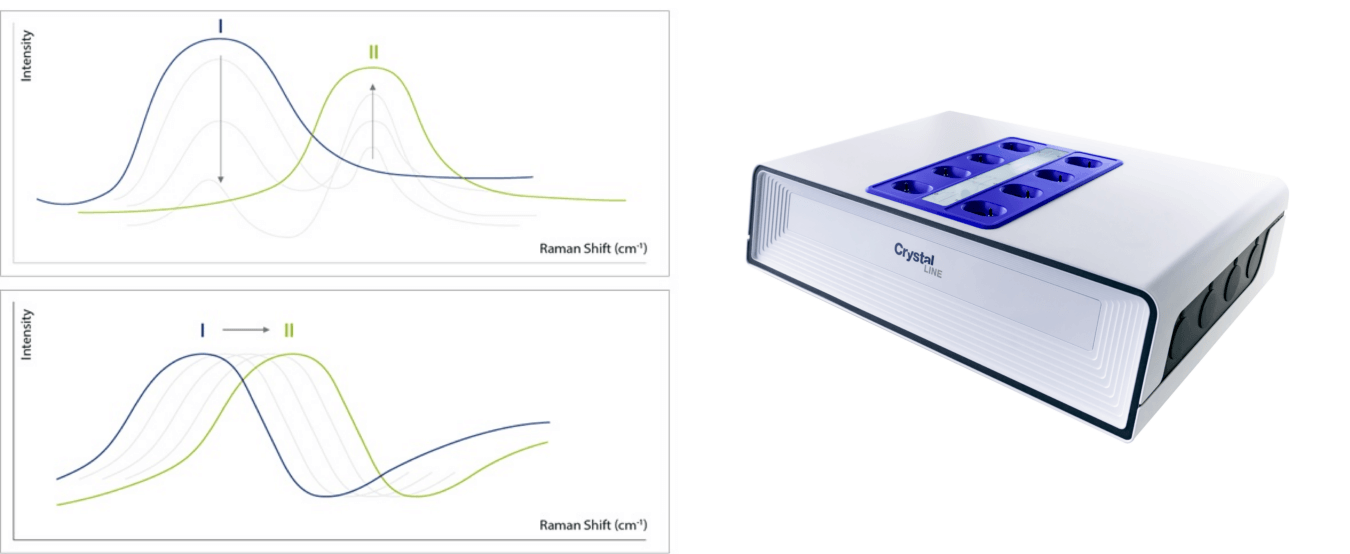
Do you have a Raman Spectrometer? Connect it now to the Crystalline instrument! Controlling your crystallization process was never so easy!
All in one! CrystallineRR, your development solution:
- Multiple reactor systems
- Temperature control
- Small volume
- Raman spectroscopy
- Transmissivity
- In-situ probes
Case study
The following case study shows both significant and small changes in the crystal structure of an active ingredient. The research was performed at Boehringer Ingelheim laboratories.
The active ingredient under investigation has two known anhydrous forms, hereunder designated as Form I and Form II. Crystals of Form I are plates and melting at 223°C.
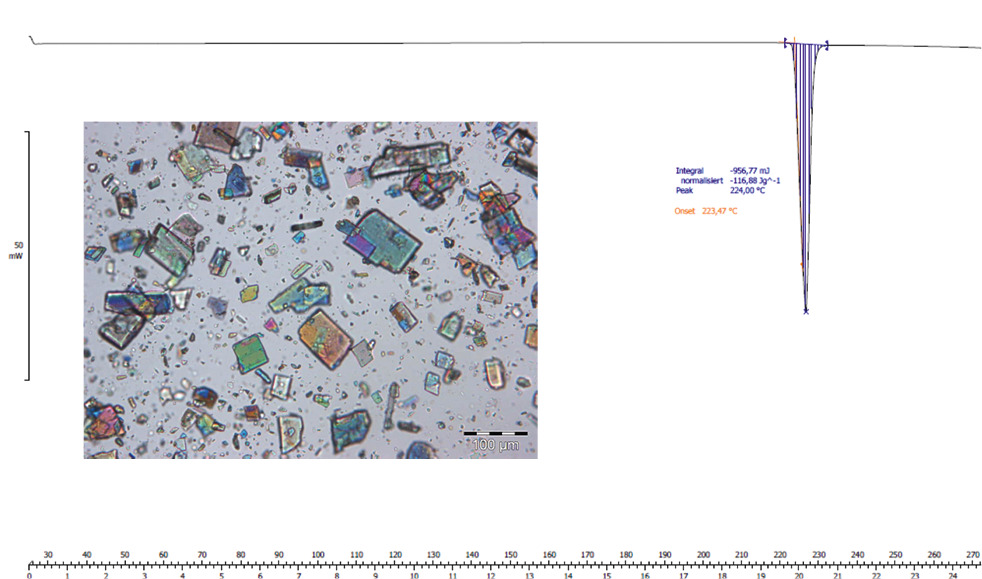
DSC curve of Form I showing a melting endothermic event at 223°C. Microscope image of Form I.
Crystals of Form II have a rod-like shape. Form II is first melting at 215°C. The melt is recrystallizing in crystals of Form I at 218°C, which are finally melting at 223°C.
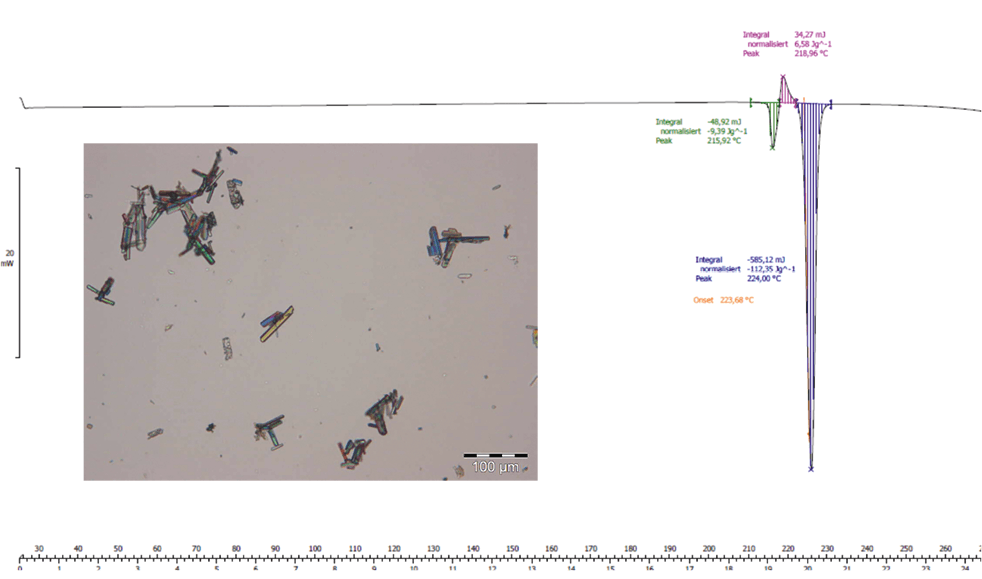
DSC curve of Form II showing a melting endothermic event at 215°C followed by exothermic recrystallization event to Form I at 218°C and its endothermic melt event at 223°C. Microscope image of Form II.
Preliminary experiments showed that Form II is the more stable form at room temperature. These two forms have an enantiotropic relationship. The transition temperature was now determined at BI laboratories to be around 70°-75°C through bracketing experiments with slurry of both forms at different temperatures, using Crystal16 and Crystalline instruments. In order to better understand the crystallization and the stability of these two forms, suspensions of each form were measured by using the Crystalline instrument (sampling parameters: excitation time: 3 minutes, accumulations: 1) and Raman spectroscopy (Kaiser Optical Systems Rxn2, 785nm). After comparison of the two spectra, the peaks of interest were selected and are shown below (in this case amide III bands).
A given amount of the metastable form (Form I) was suspended in a saturated solution of the compound and 10% of the stable form (Form II) was added. The polymorphic transformation from Form I (blue spectrum) to Form II (yellow spectrum) using either the peak height of appearing/ disappearing peaks (left) or the shift of a peak maximum (right) was successfully monitored by Raman spectroscopy. The spectra have been normalized on a peak of the solvent, close to the area of interest.
The kinetic transformations were observed at different temperatures as follows:
- At 60°C (graphs below) a full conversion to the stable form was observed after 200 minutes at 60°C.
- At 20°C, 600 minutes were required to achieve the same result.
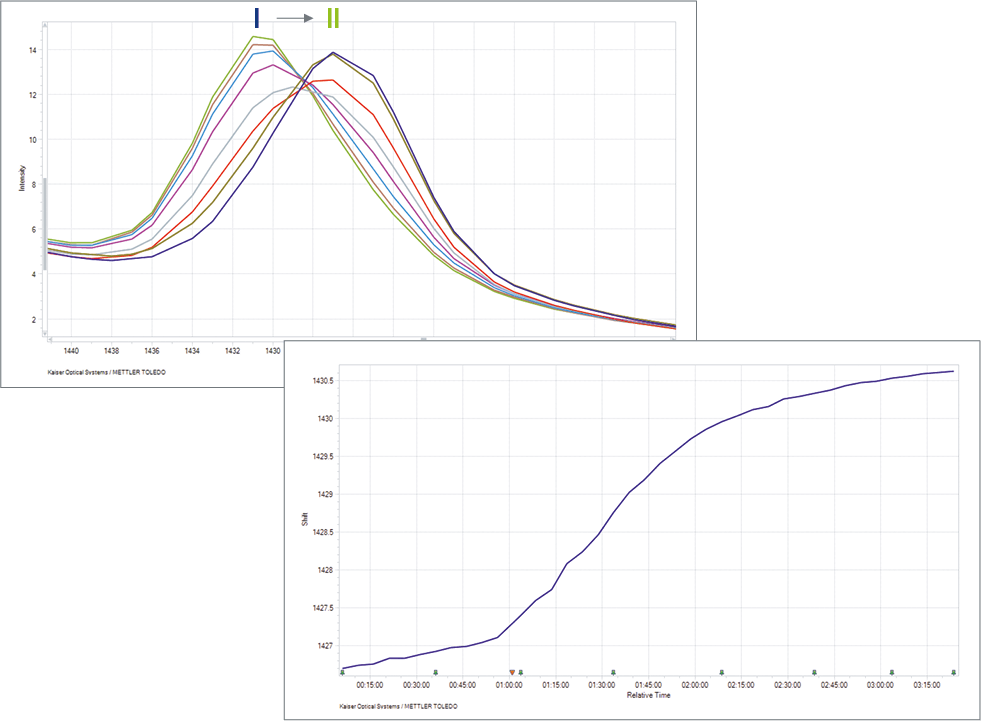
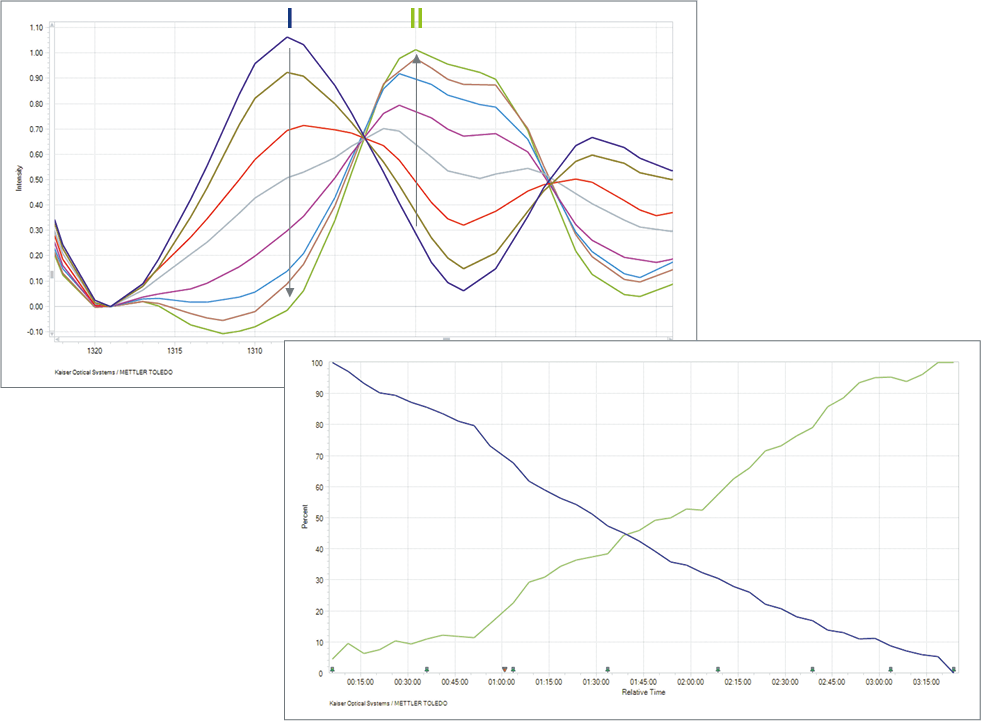
In this particular example, Raman provided valuable information about the crystallization behavior of the two polymorphs at the lab scale. Moreover, this information is now being used to optimize the crystallization process of the preferred polymorph at larger scale.
Technobis Crystallization Systems is deeply grateful to Dr. Manuel Henry for his help with this case study.
Curious to learn more?
Read more about the case study in this article, by downloading the full application note "In-Situ Crystallization Monitoring with Crystalline and Raman Spectroscopy".